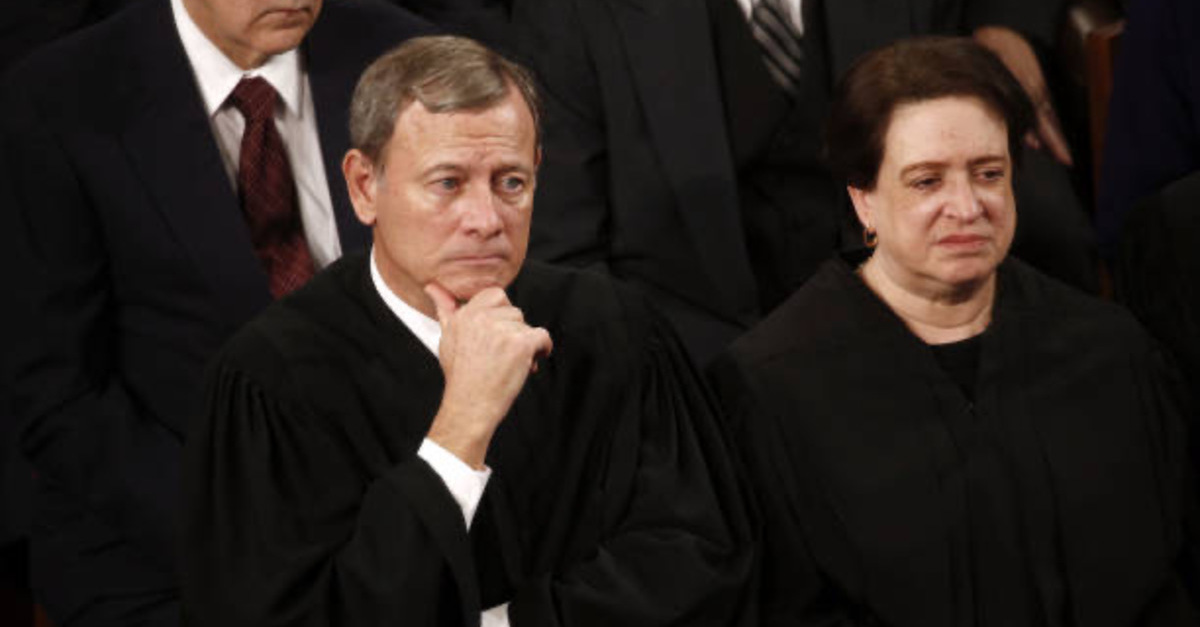
The Chief Justice of the United States kicked off Monday with some question asking and answering—about how much power presidents really have to, say, treat 3.2 million acres of underwater area as a monument under the Antiquities Act of 1906.
For years, fishermen complained that the Obama-era ban on commercial fishing in the Northeast Canyons and Seamounts Marine National Monument would devastate the industry in the New England region. Although the Trump administration made a point to lift that ban as a matter of policy during an election year, the chief justice noted that the Biden administration may well reinstate those restrictions. Roberts, seemingly anticipating that’s where all of this is headed, declined to express an opinion about the merits of a would-be follow up case, but he did express “concerns” about presidents wielding sweeping authority in this area even as he respected the court’s denial of certiorari in the case of the Massachusetts Lobstermen’s Association petitioners.
Roberts began by saying a speaker of “ordinary English” would and should agree that thousands of miles of land beneath the sea doesn’t sound like a “monument” or an “antiquity”—and yet, here we are:
Which of the following is not like the others: (a) a monument, (b) an antiquity (defined as a “relic or monument of ancient times,” Webster’s International Dictionary of the English Language 66 (1902)), or (c) 5,000 square miles of land beneath the ocean? If you answered (c), you are not only correct but also a speaker of ordinary English. In this case, however, the Government has relied on the Antiquities Act of 1906 to designate an area of submerged land about the size of Connecticut as a monument—the Northeast Canyons and Seamounts Marine National Monument.
Though the most draconian fishing restrictions (i.e., the ban) may be lifted for now, Roberts notes that the Biden administration is currently reviewing the prior administration’s policy; Roberts cited to 86 Fed. Reg. 7037, 7039 (2021), which says that President Joe Biden, on day 1 of his presidency, ordered the Secretary of the Interior, “as appropriate and consistent with applicable law, including the Antiquities Act, 54 U.S.C. 320301 et seq.” to consult with the “Attorney General, the Secretaries of Agriculture and Commerce, the Chair of the Council on Environmental Quality, and Tribal governments” and “conduct a review of the monument boundaries and conditions” of three monuments—including the Northeast Canyons and Seamounts Marine National Monument. The important clause outlines the purpose of the review process: “to determine whether restoration of the monument boundaries and conditions that existed as of January 20, 2017, would be appropriate.”
Chief Justice Roberts maintained that the history of the Antiquities Act of 1906 itself indicates how and why the law came to be:
The Antiquities Act originated as a response to widespread defacement of Pueblo ruins in the American Southwest. Because there was “scarcely an ancient dwelling site” in the area that had not been “vandalized by pottery diggers for personal gain,” the Act provided a mechanism for the “preservation of prehistoric antiquities in the United States.” Dept. of Interior, Nat. Park Serv., R. Lee, The Antiquities Act of 1906, pp. 33, 48 (1970) (internal quotation marks omitted). The Act vests significant discretion in the President, who may unilaterally “declare by public proclamation historic landmarks, historic and prehistoric structures, and other objects of historic or scientific interest that are situated on land owned or controlled by the Federal Government to be national monuments.” 54 U. S. C. §320301(a). The President may also reserve “parcels of land as a part of the national monuments,” but those parcels must “be confined to the smallest area compatible with the proper care and management of the objects to be protected.” §320301(b).
But Roberts focused his attention on the words “smallest area compatible with […] care and management” of that which is “to be protected.” He said that this “restriction has ceased to pose any meaningful restraint” because presidents have treated “ecosystems” and “vast and amorphous expanses” of “submerged lands” as “landmarks,” “structures” and “objects” — a far cry from the preservation of “indigenous pottery.”
“We have never considered how a monument of these proportions—3.2 million acres of submerged land—can be justified under the Antiquities Act. And while we have suggested that an ‘ecosystem ‘and ‘submerged lands’ can, under some circumstances, be protected under the Act, see Alaska v. United States, 545 U. S. 75, 103 (2005), we have not explained how the Act’s corresponding ‘smallest area compatible’ limitation interacts with the protection of such an imprecisely demarcated concept as an ecosystem,” Roberts wrote, seemingly anticipating a future challenge along these very lines. “To date, petitioners have not suggested what this critical statutory phrase means or what standard might guide our review of the President’s actions in this area.”
“We may be presented with other and better opportunities to consider this issue without the artificial constraint of the pleadings in this case,” Roberts concluded.
[Image via Stefani Reynolds/Bloomberg via Getty Images]